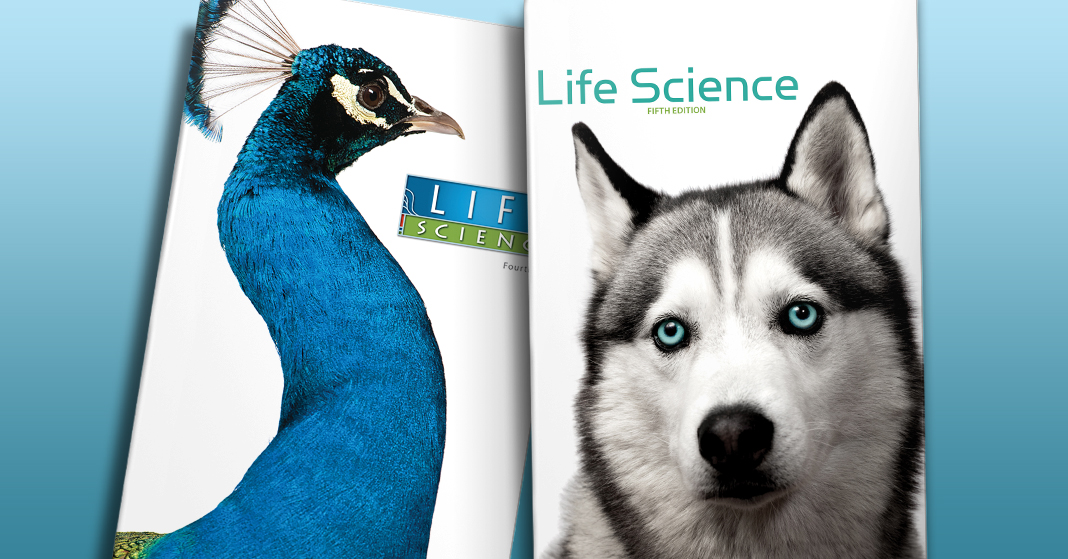
You’re looking for books for your youngest child. Because you’ve gone through all the same subjects with your older children, you’ve got almost everything you need already. You just need new copies of the consumables. You pull up the website to order them, only to find that a new edition has come out. The things you need aren’t available anymore. Can you use the materials from different editions together?
I get this question a lot. I love being able to tell parents that, yes, you can use the two editions together, but it’s rare. A lot of times, mixing editions seems cost effective, but it isn’t worth the hassle you’ll go through trying to make them compatible.
How Do Editions Change?
Let’s be real here. At BJU Press, our writers don’t completely rewrite a textbook to produce a new edition. That just wouldn’t be practical, especially when some content may not need to change. So what do we change before we release a new edition of a textbook?
• College Readiness and Best Practices
National standards for each subject and best practices for teaching different age levels tend to change regularly. We don’t actively adjust our materials to align with standards. However, we do research and make adjustments in the students’ interests. That way, we can assure parents that their children will be prepared for the next grade level, standardized tests, and current expectations for college freshmen. Additionally, research about how children learn continues to show educators that children need more than paragraphs of information to learn from. They need activities, visuals, and opportunities to use technology in a safe way. Many new editions update the textbooks according to that research. Sometimes these updates are more noticeable in the teacher edition than the student edition, but they do appear in both.
• BJU Press Standards
We also want our textbooks to measure up to our standards. Each new edition should have clear biblical worldview integration, teach critical thinking skills, and show children and teens that they can take joy in learning. We also add new technology resources as they become available.
• Design and Page Layout
Design is a key component to successful textbooks. Can a child understand certain kinds of information better from a paragraph or from an infographic? Even the amount of white space on a page can help or hinder a student’s learning. In many new editions, we’re adding design elements to encourage learning and comprehension.
• Errors and Feedback
Even in carefully prepared textbooks, mistakes happen. Issuing a new edition gives us a chance to fix errors from the previous edition. We also take the opportunity to incorporate some of the suggestions we’ve received from educators using our materials.
Problems with Using Different Editions
Not all new editions will have every type of change I’ve listed, but they usually do have several of them. And sometimes, the amount of change a textbook needs means that it will get heavily rewritten. Whenever we release a new student edition, we’ll also release updated versions of corresponding materials so that everything matches up. It doesn’t matter how much or how little the student edition has changed.
Some of the modifications we make may seem minor, but they can still be difficult to work around if you’re using materials from two different editions. Design updates can completely change the layout of the book, meaning all the page numbers are different in the new edition. That doesn’t sound like a big deal until you’re trying to grade your child’s reviews.
Updates to national standards, teaching strategies, and our own standards can lead to big changes in review questions and activity manuals. You’ll have to double check both versions to see which questions you have answers to, or create answers for anything you don’t have an answer to.
Obviously, total rewrites or heavy rewrites won’t be compatible with older editions, but even light changes to student activities and lab manuals can make the corresponding answer key obsolete.
Using Out-of-Print Materials
We always highly recommend that you get the updated materials, but we do understand that getting a whole new set of books isn’t always an option, especially if it’s an expense you weren’t expecting. You may be able to find out-of-print materials through third-party sellers, especially nonconsumables such as teacher editions and answer keys.
However, it’s highly unlikely that you’ll be able to find student activities or labs from a third-party seller. In those cases, you can use the newer labs and activities with your older materials, provided that you get the newer answer key as well. Activities and labs often teach skills that are important for the course, but aren’t always directly covered in the student edition, so you don’t have to have the new student book. However, please note that this may not hold true for science courses Grade 7 and above. Life Science (5th edition) incorporates new lab activities that relate directly to skills from the student edition. These same skills weren’t covered in the same way or as directly in Life Science (4th edition). When activities do relate directly to the student edition, you can always skip them.
Unfortunately, if you are unable to find an unused copy of a student worktext, we can only recommend that you invest in the new book.
Of course, it’s up to you if you want to try mixing editions anyway. We wholeheartedly believe that each new edition is an improvement in the material. And, for you, it’s always worthwhile for your sanity and peace of mind to be using materials that are meant to be used together.
Please reach out to customer service at 800-845-5731, they will be happy to help!
How do I see the current edition on individual grades and texts?